Who Is Sir Edwin Landseer? 10 Things to Know
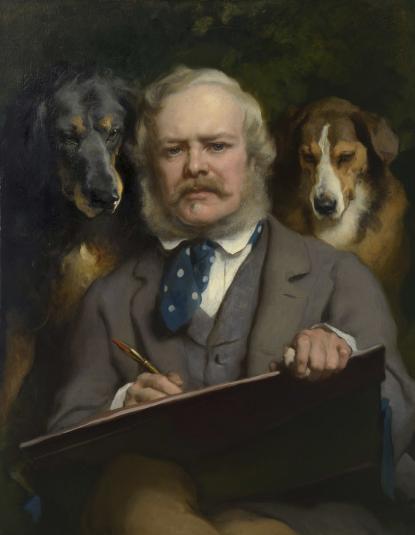
Sir Edwin Landseer, The Connoisseurs: Portrait of the Artist with two Dogs, before Jun 1865, oil on canvas, Royal Collection Trust/© His Majesty King Charles III 2022
Sir Edwin Landseer is known today as the “animal painter.” The 19th-century British artist developed that skill from a very early age. But in his long career, he also created portraits of fellow Britons, including ones as famous as Queen Victoria and Prince Albert.
1. He was a prodigy.
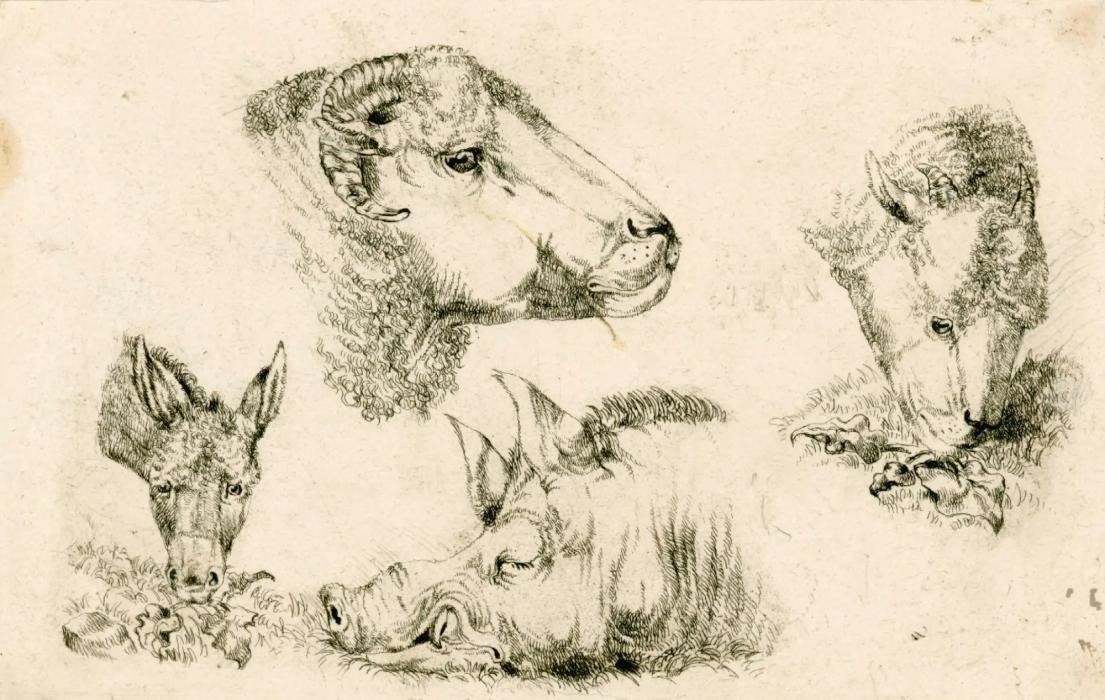
Edwin Landseer, R.A., Studies in a Farmyard; Heads of a Boar, Sheep and Donkey, 1810?, etching, © Royal Academy of Arts, London
Landseer’s father, an accomplished engraver, believed that formal education was harmful to aspiring artists. He sent young Edwin, then only five or six, into the fields to sketch sheep, goats, and other animals. Some of those early drawings are now in museums around the world.
At age 11 Edwin won the Royal Society of Arts’s silver palette for his animal drawings. At 13 he debuted at the Royal Academy in London, exhibiting two drawings.
2. He studied animals by dissecting them.

An older artist, Benjamin Robert Haydon, encouraged the teenage Edwin to dissect a lion carcass and in order to better understand animal muscular and skeletal structure.
Landseer would become celebrated for the realism and drama of his animal portraits.
3. There is a dog named after him.

Sir Edwin is responsible for the myth that Saint Bernard dogs carried kegs of brandy around their necks during rescue missions. Not true, unfortunately, despite what we see in his popular Alpine Mastiffs Reanimating a Distressed Traveler. It is true that the black and white Newfoundland breed known as the Landseer was named after the artist.
4. He may have been ambidextrous.

He was said to draw with both hands at once. A popular rumor was that Sir Edwin could work on a horse’s tail with one hand while completing the animal’s head with the other.
5. He was famous in his day.

Sir Edwin became one of the most famous artists of his time. He made a fortune by selling his artworks as engravings made by his brother, Thomas Landseer.
6. He was a favorite of Queen Victoria and friend of Charles Dickens.

Landseer was welcome in the most exclusive circles of society, including among British royals and other members of the English nobility. He was also friends with novelists Sir Walter Scott, Charles Dickens, and William Thackeray. He painted many portraits of Queen Victoria and her pets. And he even gave her and Prince Albert etching lessons. The queen knighted Landseer in 1850.
7. His paintings had moral meanings.

Landseer often painted animals together to communicate a moral or convey a social commentary. A pair of paintings of a mangy terrier and groomed deerhound represent the working and aristocratic classes, respectively.
Monarch of the Glen, maybe his most famous painting, became a symbol for Scotland. For some, this image of a stag came to symbolize the country’s spirit and beauty. Reproductions of the painting can now be found on everything from bottles of scotch and tins of shortbread to packages of cough drops and insurance company logos.
8. He didn’t just paint animals.
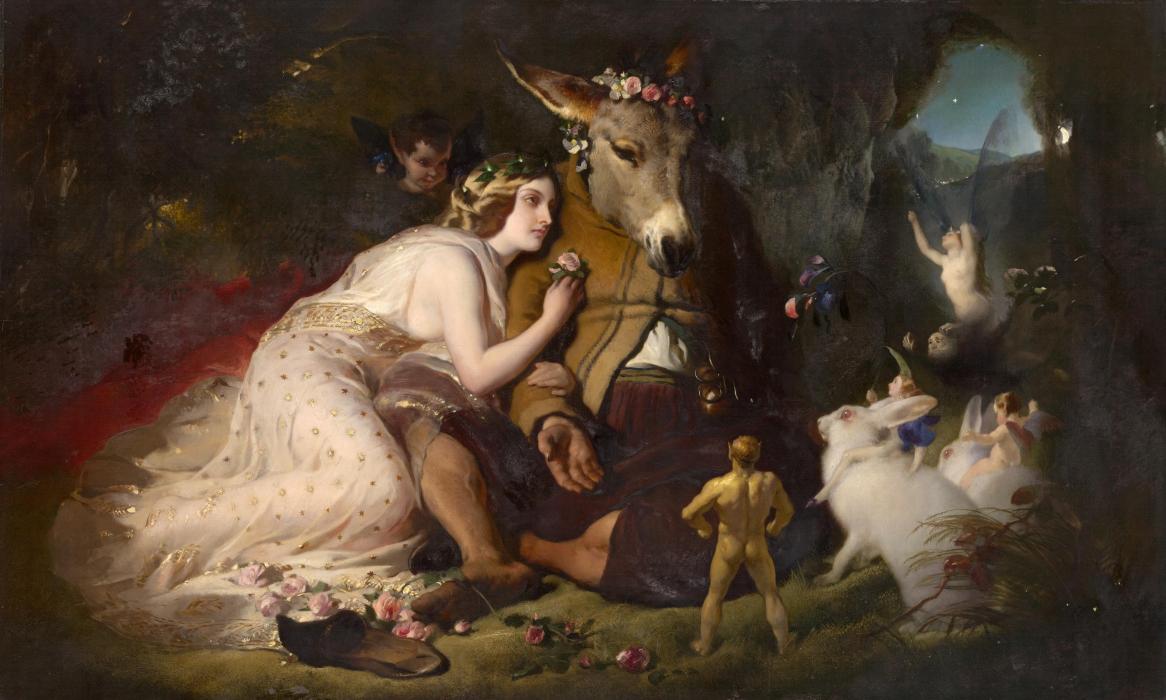
Sir Edwin Landseer, Scene from A Midsummer Night's Dream. Titania and Bottom, 1848-1851, oil on canvas, National Gallery of Victoria, Melbourne, Felton Bequest, 1932
In 1851, Landseer departed from his usual subjects to create Scene from A Midsummer Night's Dream. Titania and Bottom. The painting, based on the play by William Shakespeare, shows the fairy queen Titania in love with Nick Bottom, a man with the head of an ass (to reflect his self-importance). The pair is in the woods, surrounded by faeries and enchanted animals. Queen Victoria called the work “a gem, beautiful, fairy-like and graceful.”
9. He carved London’s famous lions.
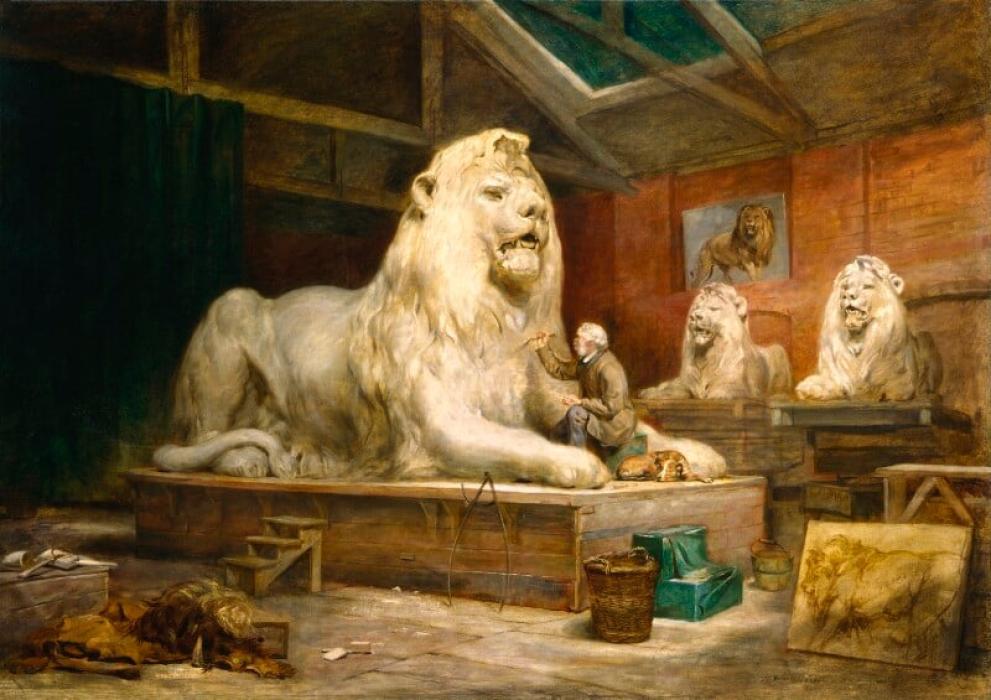
British artist John Ballantyne painted Landseer in the process of sculpting the lion statues for Trafalgar Square.
John Ballantyne, Sir Edwin Landseer, oil on canvas, circa 1865, NPG 835, © National Portrait Gallery, London
If you have ever been a tourist in London, you may have posed for a photo with Sir Edwin’s most famous animals: the four bronze lions guarding the base of Nelson’s Column in Trafalgar Square.
Sir Edwin studied lions, both living and dead, to make the sculptures. The bronze for them came from the cannons of French and Spanish ships defeated in the Battle of Trafalgar.
10. He died a national hero.
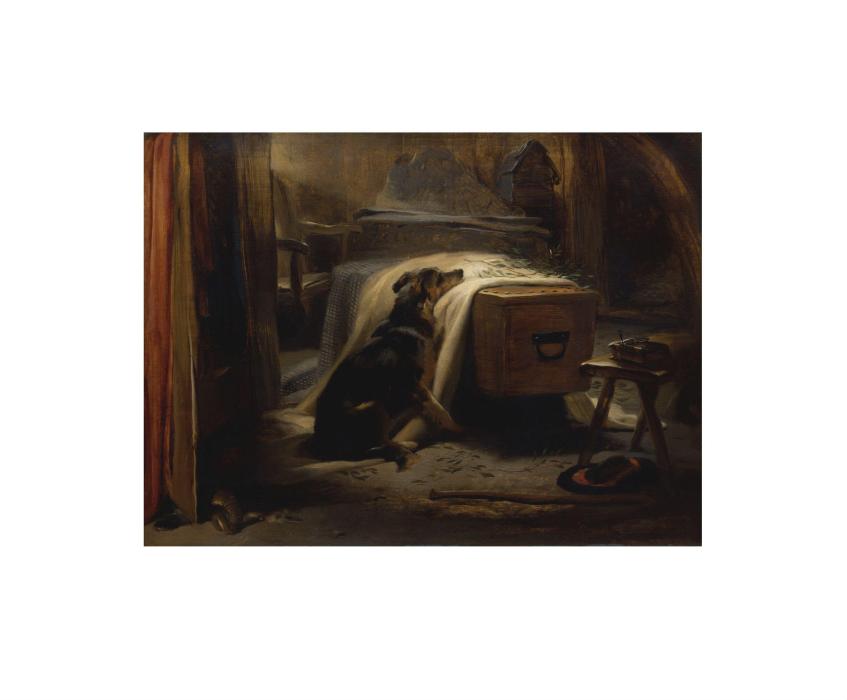
Sir Edwin Landseer, The Old Shepherd's Chief Mourner, 1837, oil painting, ©Victoria and Albert Museum, London
In middle age, Sir Edwin suffered from severe depression, diagnosed as a nervous breakdown. He rallied and returned to his work, but it is said that alcohol and drugs contributed to his relapse. His family declared him legally insane in 1872.
He died the following year, and his funeral was a national event. He is buried in Saint Paul’s Cathedral in London.
You may also like
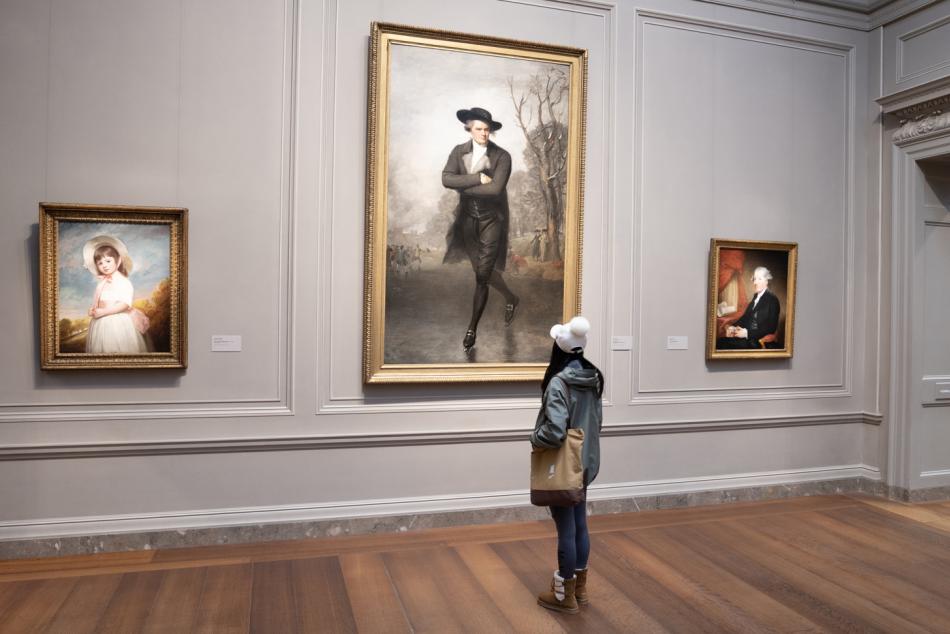
Article: Gilbert Stuart’s Skating Sensation
With "The Skater," Stuart blazed a new path in British portraiture. Its details tell the story of skating in 18th-century Britain.
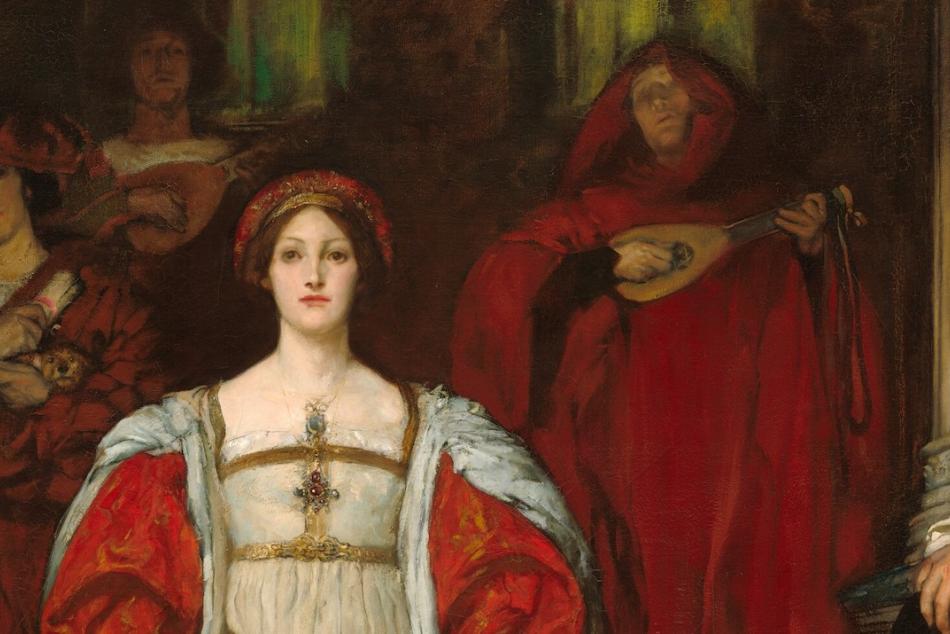
Article: William Shakespeare’s Plays in Art
See how six artists envisioned the Bard’s plays, from “Romeo and Juliet” to “King Lear.”


